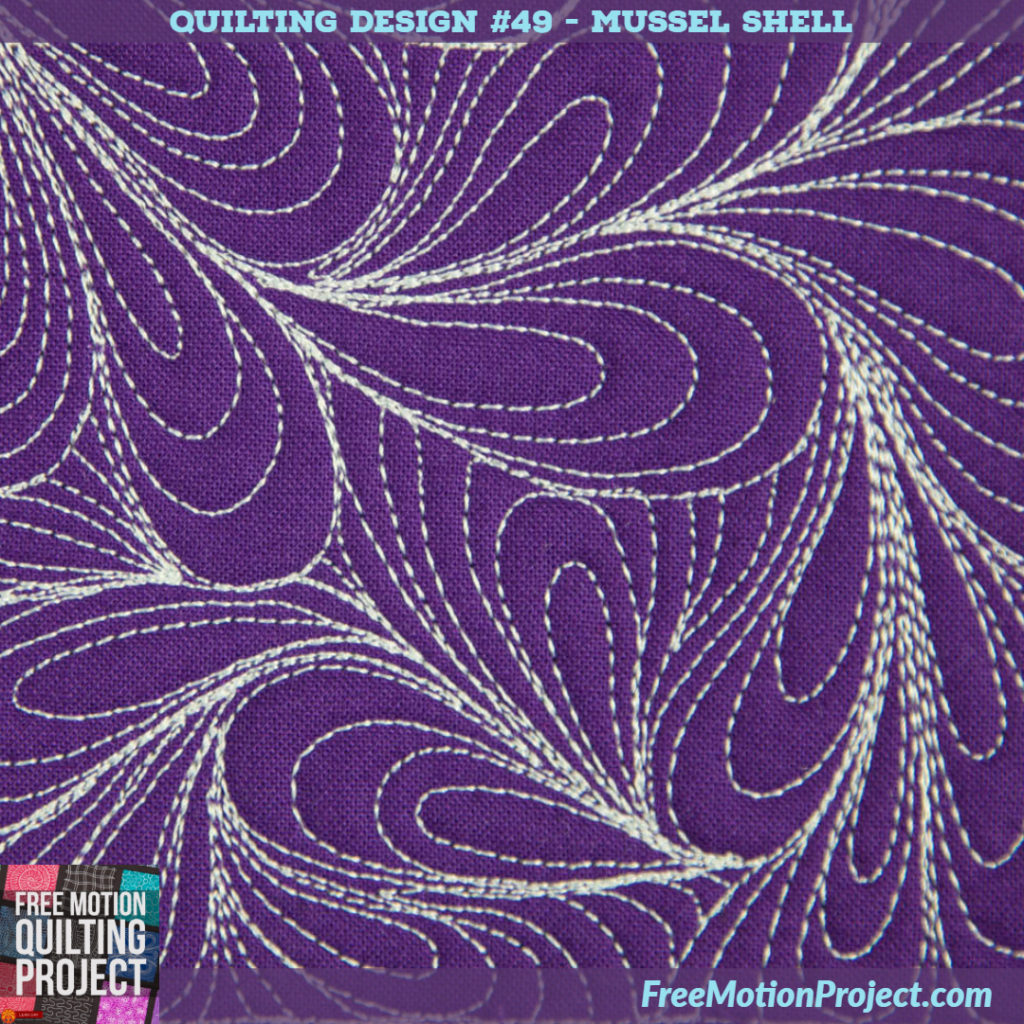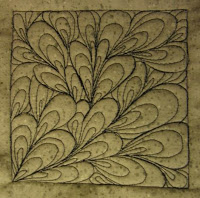Upscaling Filler Designs
Would you like to learn how to increase the size of your free motion filler designs? Today was supposed to be the day that I edited and produced a whole new block of videos, but I woke up sounding too froggy and stuffed up.
Somehow I don’t think “quilt verby carebly around dees areas.” makes for very good quilting instructions.
So instead of a new design, let’s instead learn how to upscale these 122 filler designs to make BIGGER designs that can easily fill a whole quilt!
I’ve said from the beginning that these designs can be used really dense the way that I’ve stitched them, or they can be expanded to cover large areas of you quilt very quickly.
But how does this work exactly?
First, let’s learn about the small scale filler designs.
Think of these like small scale train sets. Usually with these train sets they have a specific measurement equivalent like 6 feet = 1 inch.
This is a ratio that serves to keep the train set to scale with the trees, people, and other decorative objects train hobbiest use to make a really fantastic train layout.
Can you tell I’ve been watching a lot of Thomas the Tank engine with James?
The same is true for small scale, dense filler designs.
The scale is set by the distance between on line of quilting and another.
So my default filler distance is set at around 1/8″. This means that the maximum amount of open space within my fillers is between 1/8″ to 1/4″, which is pretty tight, and usually results in the quilt feeling like it’s cardboard’s flimsy second cousin.
Quilting this dense also LOOKS very complex because your eye are not drawn to the quilting stitches but the SPACES BETWEEN the quilting stitches.
What Your Eyes See in Quilting
So often I’ve looked closely at a quilt, marveling at the quilting, only to find that I’m not amazed at the actual stitches, but the consistent spacing and perfect distances kept between the lines.
The texture of the quilt is in the spacing, not the stitches themselves. Can you see individual stitches from 10 feet away? Heck no, unless you’re Super Woman!
So the quilting texture is entirely created by the consistent SPACING of your lines from one another.
But just like small scale trains, just because it’s small that doesn’t mean we can’t make it BIG!
In order to do this you must first calculate an extremely complex mathematical formula, stand on your head, count backwards from 87, and recite my son’s version of Jingle Bells all at the same time.
HA! No, really all you have to do is EXPAND the distance between your stitching lines.
How to Increase the Size or Scale of a Design
Here’s a super quick example using one of my favorite designs: Mussel Shell.
First off, here’s the photo of the densely quilted mussel shell for reference. This was a 4″ square.

This beautiful design is stitched within a 4 inch square, which means there is roughly 1/8 – 1/4 inch between the lines of quilting.
Now let’s stitch a 10″ version of exactly the same design, but on a 1/2″ scale. This means that we will leave roughly 1/2″ of space between the stitching lines.
Of course, you start off just the same with a tear drop shape, only this time your tear drop is the size of an elephant’s tear drop (around 2″ long and 3/4″ wide)
With the first echo we leave 1/2″ between our needle and the first tear drop.
See how much space the motif is taking up? That’s filled almost 3 inches! Filling the whole 10″ square took me around 10 minutes, verses around 30 minutes with the dense version of the same filler!
How to Quilt Bigger Shapes
In order to stitch this big shape in one fluid pass, make sure to widen the space between your hands and the needle just a bit and increase your speed.
My hands are usually around 4″ apart while stitching dense fillers. For this big block, they were around 8″ apart.
I also significantly increased my speed when flowing through these big curves. You’ll want to watch out if you start getting huge stitches because your hands are moving so faster than your machine speed can keep up with.
Instead of letting your stitches go out of control, increase the speed of your foot pedal while trying to keep your hand movement steady.
Keep echoing your stitches at a 1/2″ scale, then move on to your next mussel shell shape. Here’s my completed 10″ block:
Here’s something cool! If I shrink both pictures down to roughly the same size, you can’t tell which block was originally the small one!

So there you have it! Upscaling designs is extremely easy and ALL of the designs on this project can easily be expanded to be used to quickly fill and finish a big quilt.
Just because I demonstrate the designs on a small scale doesn’t mean that they’re limited to only this use.
Here are some more tips for larger scale free motion quilting:
1. Experiment with your hand positions – Generally I keep my hands close together on a quilt to keep good control over the quilt top.
When stitching big motifs like this, play with where you position your hands to see what gives you the best angle to stitch the shapes. Sometimes stitching from the right or top might make a prettier tear drop shape than stitching from another angle.
2. Increase and Decrease your speed – Think of driving your machine like driving your car. You don’t drive 55 mph through all curves, stop lights, and school zones, do you?
So why drive your machine like this? Foot pedals actually have many speeds, it’s our feet that get used to pressing to one angle.
Try lifting your heel up on a telephone book so more of your foot is squarely positioned on top of the foot pedal for better control over your speed.
3. When in doubt MARK IT! – There’s nothing wrong with marking a quilt top when you’re having trouble stitching a filler design from memory.
It’s easy to get stuck in corners and panic wondering “where do I go next?” Instead of getting frustrated, stop and mark the top and give yourself a good roap map for where to go next.
I think that just about covers it. I think I might have to plan on doing 10″ squares for my next 365 days. It definitely quilted up a lot quicker!
Let’s go quilt!
Leah Day

Leah
The expanded Mussel Shell design done on the 10" square is really awesome. It's beautiful, classy and so artistic looking. Thanks for showing us how dramatic expanding a design can be. It takes on a whole new life of its own!
Judy
Excellent post. Thankyou. For me I think it was much easier to stitch a condensed design to start with, but I recognised that while it was great on a wall hanging I would want it wider apart for a quilt.
Leah I tried your mussel design on a large design yesterday before you wrote this! It looks great, but your tips about the speed are so true, my stitch length was a bit varied….
hope you are feeling better soon